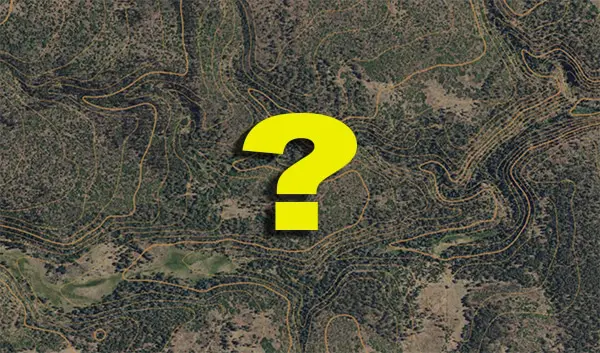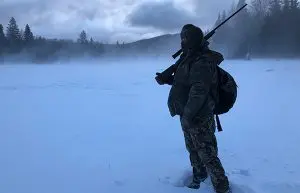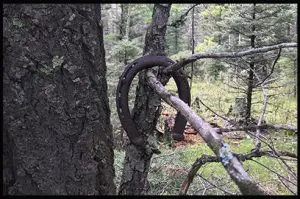
The two big questions for every elk hunter looking to hunt elk either for the first time in another state, or at home is…”Where do I hunt?” and ”How do I select a game unit with the best opportunity for success?”
Well, let’s talk first about the ElkBros Approach and what we DON’T recommend.
That would be to look at the Public Hunter Success Rates for each unit. They are just not a measure of the true potential for an area. It is all so relative to 1) the ability/quality of the hunters that hunted the unit, 2) whether or not the hunters actually filled out the survey, and 3) How much both of those dynamics, as well as the days put in, change from year to year. AND, success rates just tell you what people did a year ago. They in no way determine what you are capable of as a hunter THIS YEAR.
The area I have hunted, most of my seasons, has bounced from 8% to 16% most years but I have had a 95% success rate. Killing elk the last 34 0f 36 seasons. Forget the Success Rate. You can redefine it.
In fact, it’s those Units that show a high success rate, that I want to avoid. They are going to be harder to draw, a more crowded OTC unit and often times it’s possible that the area’s high success rate can come from private land in the unit where there is little to no pressure and the elk aren’t call educated. Thus, the private land is a great situation for harvesting a bull and those numbers are counted in with the public land numbers giving a false picture.
When we started hunting our unit, as I said above, it had a low success rate. To be fair, the survey process was even less reliable in those days, but there were WAY MORE units with much more promise when it came to success rates.
So why do we hunt that unit you ask? Great question!
Honestly it is because 1) It has elk…maybe not the quality of many other units but elk are there. 2) it is reasonably close enough that we can spend time there and get to know the area and how the elk move (HUGE ADVANTAGE). And 3) because of the lower success ratio and the difficulty of the terrain, we have a high success rate at drawing a tag. You see, you can’t kill an elk if you are not able to hunt them. That is a certainty.
So what do I look for in a unit? Again..another great question! So let’s get to the point…
We are looking for those units that have decent to good, not great, potential that we can have the best chance at drawing or hunting OTC year after year. Other than elk hunting knowledge and calling ability, knowledge and understanding of an area is your BIGGEST advantage to beating the odds. Elk will use the same areas to rut, bed, feed and water year after year. Hunters that are able to figure out and have learned the movement patterns of an area year after year have a HUGE advantage.
Okay…new question….What is Good Potential? SUPER Question!
If you are going to look at any kind of stats, look for bull to cow ratios and cow to calf ratios. But again, be careful here because there are some units that will jump out and again draw a lot of attention for others applying. Great for drooling over the opportunity, not so great for drawing it year after year, which is our goal. When looking at Bull to Cow ratios: The higher the ratio, the more competition. The more bugling when a cow comes in estrus. But I feel that a 30% ratio is solid and provides enough competition to get bulls going.
But why look at the cow to calf ratio? Well, most hunters won’t. Yet this is where you see how well the herd is growing. More elk, up to a point, equals a better hunt. Calves are going to become either mature bulls or breeding cows in the future. Solid calf numbers are a great indicator of the quality of the hunt possible now and in future years. A cow ratio of 40 or more calves to 100 cows is what I like to see.
Population to Acreage numbers is also a number often overlooked. You can look at two different hunt areas or units that will look equal when it comes to herd size as well as bull to cow to calf ratios, but if you do your homework, you may also see that one unit is three times bigger than the other. Meaning the elk will be more concentrated in the smaller area. More concentration lends to easier elk location, more encounters, and more intense competition during the rut. A great indicator of a fun hunt.
What is the terrain like? Does it offer great bedding areas? Holes, breaks in the terrain where they can avoid pressure? Places with good grass? Good water? Other favorite feed..acorns, piñon, juniper berries, mushrooms, forbs and shrubs…even agriculture nearby? Remember, elk are slaves to their bellies. Where the cows have located their best feed to give birth to a healthy calf…that is where the bulls will be too.
Large parcels of private bordering, encompassing or part of the unit. Elk have no clue what a fence means and private lands that are managed well and promote high success rates on their hunts are areas to look at and one of the greatest assets to us as public land hunters. Just as all the elk in the west started from small transplanted groups from Yellowstone, private lands that are well managed will have elk that migrate constantly out to adjoining public lands.
Burn areas. One of my favorite clues to a hot spot. Burns are elk magnets. Elk will go back to a burn area, especially a fast burnt area within weeks, but it is the burns that are 3 to 4 years old that still provide the best nutrients and will continue to attract elk.
Other hunter numbers? I don’t worry about them. I depend on my skill set, my determination and my willingness to do what others won’t to get the job done. I also know that a hunter in my area doesn’t poison the pot, so to speak. Especially in high use areas where elk are use to seeing, smelling and hearing humans. I have called in two separate groups of hunters on a morning hunt, and after they left I killed a bull only 200 yards from where we separated! Then forty-five minutes later, my hunting buddy Chav killed his bull….probably 200 to 300 yards from my bull! This is not the exception. Over 38 seasons hunting elk, it has been the rule.
There you have it y’all! Keep your broadheads sharp and your powder dry!
Have questions? Send them to joe@elkbros.com.


